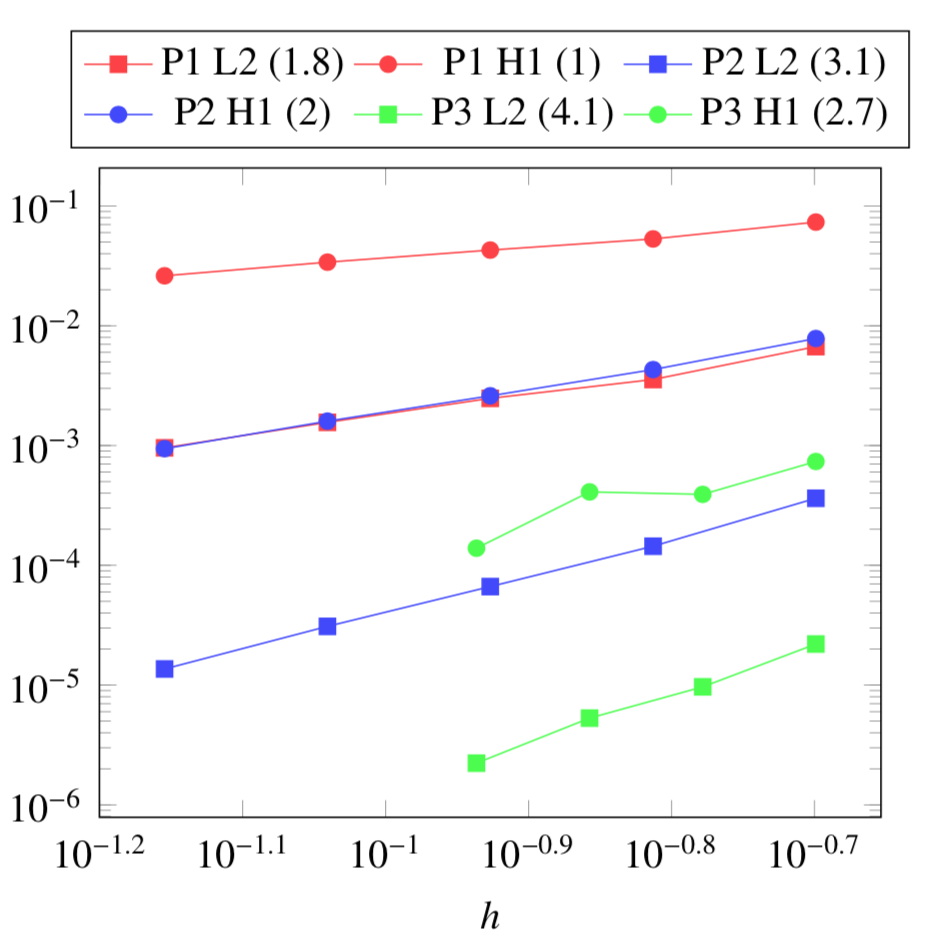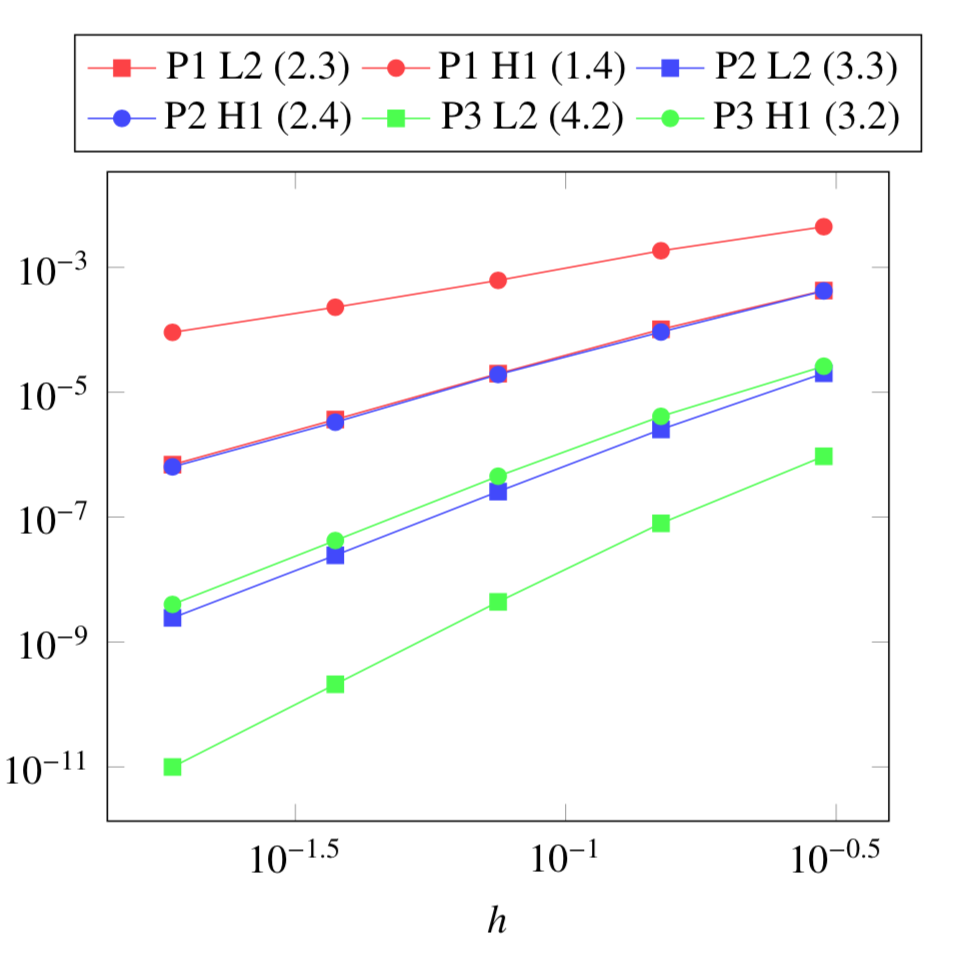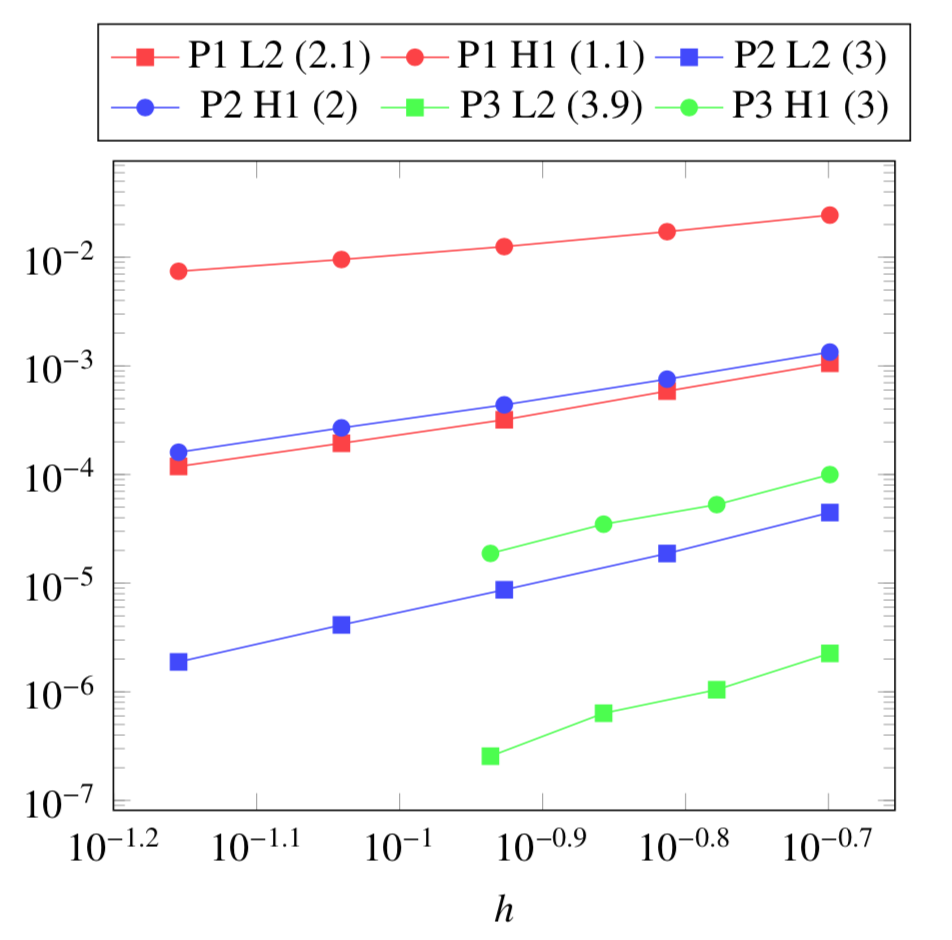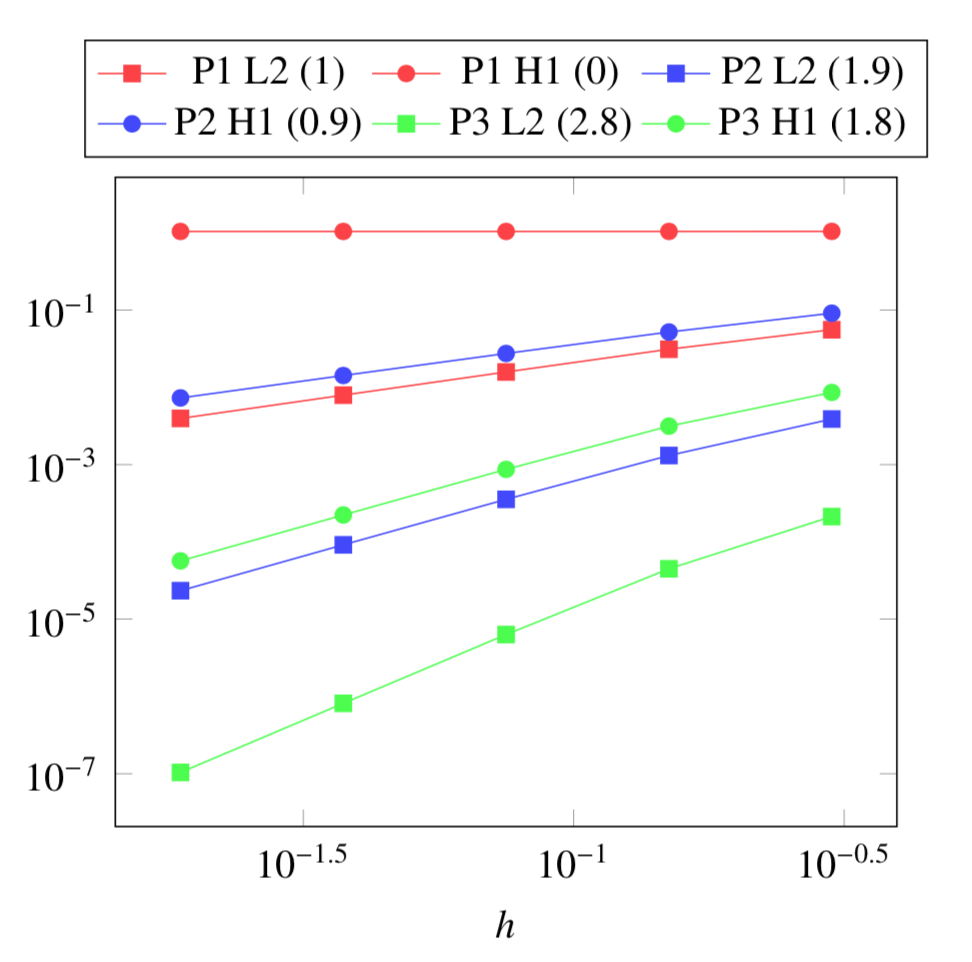QuarterTurn
In this example, we will estimate the rise in temperature due to Joules losses in a stranded conductor. An electrical potential \(V_0\) is applied to the entry/exit of the conductor which is also cooled by a force flow.
The geometry of the conductor is choosen as to have an analytical expression for the temperature.
1. Running the case
The command line to run this case in 2D is
mpirun -np 4 feelpp_toolbox_thermoelectric --case "github:{path:toolboxes/thermoelectric/cvg}" --case.config-file 2d.cfgThe command line to run this case in 3D is
mpirun -np 4 feelpp_toolbox_thermoelectric --case "github:{path:toolboxes/thermoelectric/cvg}" --case.config-file 3d.cfg2. Geometry
The conductor consists in a rectangular cross section torus which is somehow "cut" to allow for applying electrical potential. The conductor is cooled with a force flow along its cylindrical faces.+
In 2D, the geometry is as follow:
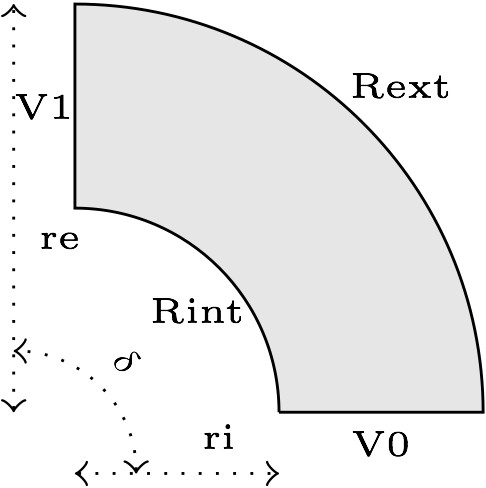
In 3D, this is the same geometry, but extruded along the z axis.
3. Input parameters
| Name | Description | Value | Unit | |
|---|---|---|---|---|
\(r_i\) |
internal radius |
1 |
\(m\) |
|
\(r_e\) |
external radius |
2 |
\(m\) |
|
\(\delta\) |
angle |
\(\pi/2\) |
\(rad\) |
|
\(V_D\) |
electrical potential |
9 |
\(V\) |
|
\(h_i\) |
internal transfer coefficient |
\(60e3\) |
\(W\cdot m^{-2}\cdot K^{-1}\) |
|
\(T_{wi}\) |
internal water temperature |
303 |
\(K\) |
|
\(h_e\) |
external transfer coefficient |
\(58e3\) |
\(W\cdot m^{-2}\cdot K^{-1}\) |
|
\(T_{we}\) |
external water temperature |
293 |
\(K\) |
3.1. Model & Toolbox
-
This problem is fully described by a Thermo-Electric model, namely a poisson equation for the electrical potential \(V\) and a standard heat equation for the temperature field \(T\) with Joules losses as a source term.
-
toolbox: thermoelectric
3.2. Materials
| Name | Description | Marker | Value | Unit | |
|---|---|---|---|---|---|
\(\sigma\) |
electric conductivity |
omega |
\(4.8e7\) |
\(S.m^{-1}\) |
3.3. Boundary conditions
The boundary conditions for the electrical probleme are introduced as simple Dirichlet boundary conditions for the electric potential on the entry/exit of the conductor. For the remaining faces, as no current is flowing througth these faces, we add Homogeneous Neumann conditions.
| Marker | Type | Value | |
|---|---|---|---|
V0 |
Dirichlet |
0 |
|
V1 |
Dirichlet |
\(V_D\) |
|
Rint, Rext, top*, bottom* |
Neumann |
0 |
As for the heat equation, the forced water cooling is modeled by robin boundary condition with \(Tw\) the temperature of the coolant and \(h\) an heat exchange coefficient.
| Marker | Type | Value | |
|---|---|---|---|
Rint |
Robin |
\(h_i(T-T_{wi})\) |
|
Rext |
Robin |
\(h_e(T-T_{we})\) |
|
V0, V1, top*, bottom* |
Neumann |
0 |
*: only in 3D
4. Outputs
The main fields of concern are the electric potential \(V\), the temperature \(T\) and the current density \(\mathbf{j}\) or the electric field \(\mathbf{E}\). // presented in the following figure.
5. Verification Benchmark
The analytical solutions are given by:
We will check if the approximations converge at the appropriate rate:
-
k+1 for the \(L_2\) norm for \(V\) and \(T\)
-
k for the \(H_1\) norm for \(V\) and \(T\)
-
k for the \(L_2\) norm for \(\mathbf{E}\) and \(\mathbf{j}\)
-
k-1 for the \(H_1\) norm for \(\mathbf{E}\) and \(\mathbf{j}\)
|
|
|
|
|
|
 .pdf
.pdf

